Figure drawing is a foundational art form that captures the human body’s essence, blending observation, proportion, and anatomy․ It’s a creative journey from basic sketches to detailed masterpieces, emphasizing personal expression and technical skill․
Understanding the Basics of Figure Drawing
Figure drawing begins with understanding the fundamentals of line work, proportion, and gesture․ It involves observing the human form to capture its structure and movement accurately․ Artists start by sketching basic shapes to represent the body’s proportions before adding details․ Gesture drawing helps convey motion and energy, while contour drawing focuses on outlines․ Value, or shading, adds depth and dimension․ Practicing these elements regularly enhances skill and confidence, making figure drawing accessible to artists of all levels․
The Importance of Proportion and Anatomy
Proportion and anatomy are the backbone of figure drawing, ensuring accuracy and realism․ Correctly measuring body segments and understanding muscle and bone structures help capture movement and form․ Ignoring these fundamentals can lead to distorted figures․ Study the human skeleton and muscular system to draw natural poses and expressions․ Practice sketching individual body parts to master their proportions․ Balancing detail with simplicity ensures your drawings remain lifelike without overcomplicating․ This foundation is crucial for creating compelling and believable artwork, enhancing your ability to express emotion and movement effectively․
Setting Up Your Workspace for Effective Drawing
A well-organized workspace is crucial for productive figure drawing․ Ensure good lighting to see details clearly and maintain a comfortable, ergonomic setup to avoid fatigue․ Keep tools and materials within easy reach to save time; A clean, clutter-free environment helps focus and reduces distractions․ Consider using reference images or inspirational art nearby to spark creativity․ Personalize your space to foster motivation and comfort, ensuring it reflects your artistic style and workflow needs for optimal productivity․
The Fundamentals of Figure Drawing
Mastering line work, proportion, and gesture is crucial․ Understanding the skeleton and muscular system helps capture poses accurately, while perspective adds depth to compositions, making figures lifelike and dynamic․
Mastering the Human Skeleton and Muscular System
Understanding the human skeleton and muscular system is crucial for accurate figure drawing․ The skeleton provides the structural foundation, while muscles define form and movement․ Studying anatomy helps artists capture realistic poses and proportions․ By learning how bones and muscles interact, you can depict the body’s dynamics convincingly․ This knowledge is essential for creating lifelike drawings, whether static or in motion․ Practice sketching individual bones and muscle groups to enhance your ability to render the human form with precision and confidence․
Understanding Perspective and Depth in Figure Drawing
Perspective and depth are vital in figure drawing to create a three-dimensional illusion․ Techniques like vanishing points, overlapping, and atmospheric perspective guide the viewer’s eye and enhance realism․ Vanishing points establish a horizon line, while overlapping shows spatial relationships․ Atmospheric perspective softens distant elements, adding complexity․ Mastering these techniques ensures dynamic and visually compelling figure drawings, capturing the essence of the human form in space․
The Role of Light and Shadow in Creating Realism
Light and shadow are essential for adding depth and realism to figure drawings․ Understanding how light interacts with the body’s contours helps create three-dimensional forms․ Shadows define volume, while highlights emphasize texture and shape․ Proper shading techniques, like hatching and cross-hatching, enhance the illusion of form․ Balancing light and dark areas creates contrast, making the drawing more dynamic and lifelike․ Mastery of these elements ensures a believable and engaging representation of the human figure․

Tools and Materials for Figure Drawing
Essential tools include graphite pencils, erasers, sharpener, blending stumps, and sketchbooks․ Choose paper types for desired textures․ Digital tools like drawing tablets offer versatility for modern artists․
Choosing the Right Pencils and Erasers
Selecting the right tools is crucial for figure drawing․ Graphite pencils range from HB (medium) to 2B, 4B, 6B, and 8B (softer, darker)․ Harder pencils (H, 2H) are ideal for fine details․ Erasers like kneaded erasers allow precise corrections, while white vinegar erasers remove large areas of graphite․ A sharpener and blending stumps enhance your workflow․ Experiment with sketching pencils for loose gestures and charcoal for expressive studies․ The right tools elevate your creativity and precision in capturing the human form․
Exploring Different Types of Paper for Drawing
Choosing the right paper is crucial for figure drawing, as it affects texture, detail, and overall results․ Cartridge paper is a popular choice for its smooth surface and durability․ Watercolor paper offers a textured finish, ideal for expressive sketches․ Bristol board provides a sleek, ultra-smooth surface for fine details․ Consider weight (gsm) and finish (hot press, cold press) to suit your style․ Experimenting with different papers helps artists discover their preferred medium for capturing the human form effectively․
Digital Tools for Figure Drawing: Pros and Cons
Digital tools offer unparalleled flexibility and convenience for figure drawing, enabling artists to experiment with various brushes, layers, and undo features․ Software like Procreate and Adobe Photoshop provides infinite customization, while drawing tablets like Wacom or iPad Pro deliver tactile precision․ However, the cost of high-quality hardware and software can be prohibitive․ Additionally, digital tools may lack the organic feel of traditional media, and over-reliance on technology can hinder the development of foundational drawing skills․ Balancing digital and traditional methods is key to mastering figure drawing effectively․
Advanced Techniques in Figure Drawing

Mastering advanced techniques involves capturing gesture, movement, and emotion․ Learn to render complex poses, dynamic expressions, and intricate details like hands and feet with precision and confidence․
These skills elevate your art, transforming simple sketches into compelling, lifelike compositions that tell stories and evoke emotions․
Capturing Gesture and Movement in Your Drawings
Capturing gesture and movement involves quick, expressive sketches that convey energy and dynamism․ Use simple shapes and lines to outline poses, focusing on fluidity rather than detail․ Practice short exercises, like one-minute sketches, to master the essence of motion․ Observe how weight shifts and limbs extend, translating these into confident strokes․ This technique helps create lively, engaging drawings that reflect the subject’s vitality and emotion, enhancing your ability to depict action and grace in your work․
Rendering Facial Expressions and Emotions
Rendering facial expressions and emotions is crucial in figure drawing, as it brings depth and personality to your work․ The eyes, often called the windows to the soul, are vital—subtle changes in their shape and the eyebrows can convey a wide range of emotions․ The mouth also plays a significant role, with even slight movements altering the overall expression․ To master this, study the subtleties of facial anatomy and practice sketching various emotions․ Observation and consistent practice are key to capturing the essence of human feelings accurately․
Drawing Hands and Feet: The Most Challenging Parts
Drawing hands and feet is notoriously difficult due to their intricate anatomy and expressive nature․ With numerous small bones and joints, capturing their complexity requires precision․ Artists often struggle with proportions, poses, and details like fingernails or toenails․ Practice is key to mastering these challenging areas, as they convey emotion and movement effectively in figure drawing․ Using reference images and breaking them into simpler shapes can help achieve accuracy and confidence․
Common Mistakes and How to Avoid Them
Common mistakes in figure drawing include poor proportion, inaccurate measurements, over-detailing, and perspective errors․ Avoid these by using reference lines, measuring techniques, and maintaining simplicity in your work․
Understanding Proportion and Measurement
Proportion and measurement are fundamental in figure drawing, ensuring the body’s parts align correctly․ Accurate proportions create balance and realism․ Techniques like reference lines or grids help measure distances and angles․ Common mistakes include guessing proportions instead of measuring․ Practice enhances your ability to estimate and measure accurately, leading to more precise and professional drawings․ Mastering proportion and measurement is key to capturing the human form effectively and avoiding distortions․
Avoiding Over-Detailing and Maintaining Simplicity
Avoiding over-detailing is crucial for maintaining simplicity in figure drawing․ Focus on capturing the essence of the form rather than every minor detail․ Use gestural lines to convey movement and energy․ Simplify complex shapes into basic forms like spheres, cylinders, and rectangles․ This approach helps create a balanced composition and prevents the drawing from feeling cluttered․ Remember, negative space is equally important as the subject itself․ Practice sketching quickly to avoid over-refining and keep your work fresh and expressive․
Fixing Common Errors in Perspective and Anatomy
Common errors in perspective often stem from inconsistent vanishing points or incorrect scaling of body parts․ To fix this, use reference lines and grids to maintain consistency․ For anatomy, mistakes like misplaced joints or disproportionate limbs can be corrected by studying the human skeleton and muscular system․ Regular practice in gesture drawing helps capture movement and proportions accurately․ Always seek feedback to identify and rectify errors early․ Consistent practice and attention to detail are key to mastering perspective and anatomy in figure drawing․

Practice and Improvement
Consistent practice is key to mastering figure drawing․ Dedicate time daily to sketch, study anatomy, and refine techniques․ Use reference images to enhance accuracy and detail in your work․
Setting Up a Regular Practice Routine
Consistency is key to improving figure drawing skills․ Dedicate a specific time daily or weekly to practice, ensuring it fits seamlessly into your schedule․ Start with short sessions and gradually increase duration as comfort grows․ Set clear goals, such as mastering gestures or refining anatomy, to track progress․ Incorporate a mix of exercises, like quick sketches and detailed studies, to keep sessions engaging․ A structured routine not only enhances technical proficiency but also fosters creativity and confidence in your artistic journey․
Using Reference Images Effectively
Using reference images effectively is crucial for accurate and dynamic figure drawing․ Select high-quality images with clear lighting and detail to study anatomy, proportions, and poses․ Analyze shadows and textures to enhance realism․ Use references to improve your understanding of muscle structure and movement․ Experiment with digital tools to overlay sketches on images for precision․ Maintain creativity by interpreting rather than copying․ Regular practice with references helps refine your skills and capture the essence of the human form in your art․
Seeking Feedback and Learning from Criticism
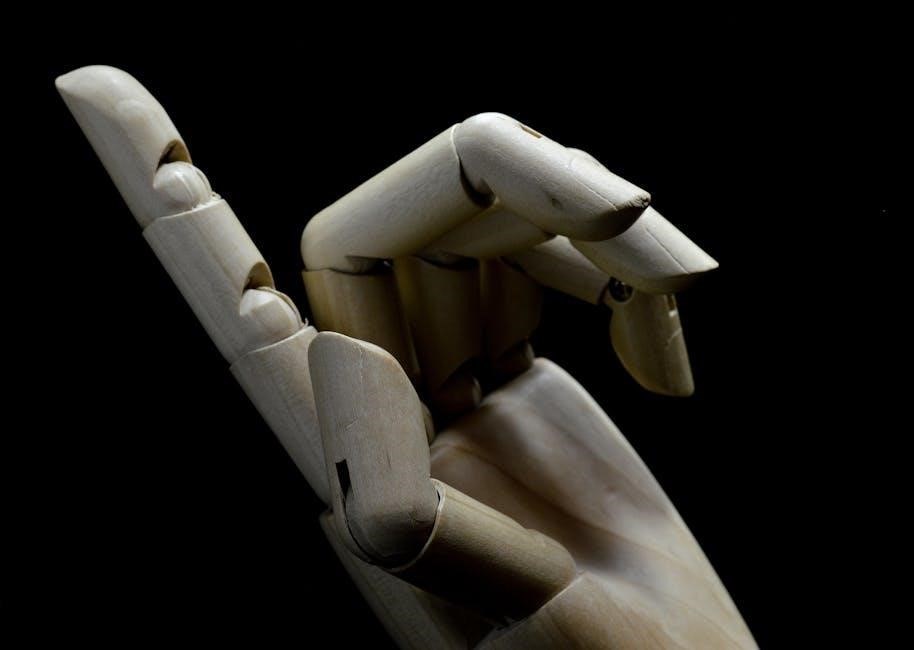
Seeking feedback is crucial for growth in figure drawing․ Just as clearing browser cache resolves login issues, feedback helps identify and fix artistic mistakes․ Embrace criticism as a tool for improvement, allowing new perspectives to refine your craft․ Constructive input highlights areas for enhancement, fostering better understanding and technique․ Regularly sharing your work and being open to suggestions can significantly accelerate your progress in mastering figure drawing․
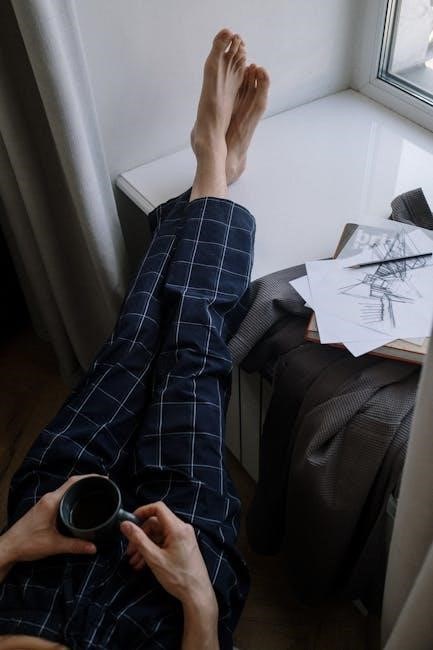
The Role of Texture and Detail
Texture and detail enhance figure drawing by adding realism and depth․ From fabrics to skin, these elements create dimension, guiding the viewer’s eye and emphasizing form and emotion․
Adding Texture to Enhance Realism
Adding texture to figure drawings brings depth and realism, making the artwork more engaging․ Techniques like hatching and stippling create illusions of fabric, hair, and skin․ Observing real-world textures helps capture their essence․ Practice rendering different surfaces to master this skill, enhancing the overall believability of your work․ Texture adds complexity, drawing the viewer’s eye and immersing them in the scene․ It’s a powerful tool to elevate your figure drawings from flat to lifelike․
Drawing Fabrics, Hair, and Other Complex Textures
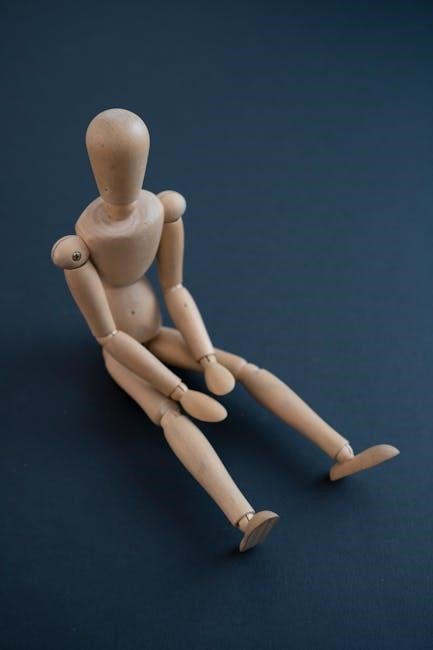
Drawing fabrics, hair, and complex textures requires patience and attention to detail․ Use hatching and cross-hatching to capture the flow of fabrics and the volume of hair․ Layering techniques can enhance realism, while observing how light interacts with textures helps create depth․ Practice sketching different materials to master their unique qualities․ Experiment with tools like pencils and erasers to achieve subtle variations․ Remember, texture adds dimension to your figure drawings, making them more engaging and lifelike․
Knowing When to Stop: The Power of Restraint
Knowing when to stop is crucial in figure drawing, as over-detailing can overwhelm the piece․ Restraint allows the artwork to breathe, maintaining simplicity and focus․ It’s about balancing detail and subtlety, ensuring the essence of the figure shines through without unnecessary complexity․ This discipline enhances the viewer’s ability to connect with the artwork, making it more impactful․ Learning to step back and evaluate when a piece is complete is a vital skill for any artist striving for elegance and clarity in their work․
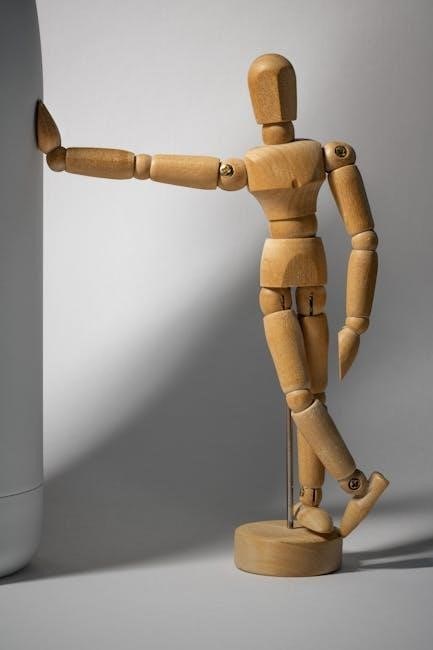
Figure Drawing in the Digital Age
Digital tools revolutionize figure drawing, offering software like Procreate and Adobe Photoshop for enhanced creativity and precision, while maintaining the art’s traditional essence and emotional depth․
Using Software for Figure Drawing

Digital tools like Procreate, Adobe Photoshop, and Sketchbook Pro revolutionize figure drawing, offering unparalleled flexibility․ Layers, undo features, and customizable brushes enable artists to experiment freely․ These programs often include reference images and tutorials, making learning accessible․ While traditional methods remain irreplaceable, software opens new creative avenues, allowing for easier corrections and vibrant color work․ The digital medium also facilitates sharing and feedback, connecting artists globally․ Embracing software can enhance both skill development and artistic expression in figure drawing․
Scanning and Editing Your Drawings
Scanning and editing your figure drawings can enhance their quality and prepare them for digital sharing or printing․ Use a high-quality scanner or camera to capture your work, ensuring proper lighting to maintain detail․ Edit using software like Photoshop or Procreate to adjust brightness, contrast, and color balance․ Clean up sketches by erasing unwanted marks and enhance details for clarity․ Experiment with digital tools to refine textures and proportions․ Save in multiple formats for versatility, whether for portfolios or social media․ This step bridges traditional and digital art seamlessly․
Sharing Your Work Online and Building a Portfolio
Sharing your figure drawings online showcases your artistry and connects you with a global community․ Platforms like Instagram and Pinterest are ideal for displaying your work․ Building a portfolio, both digital and physical, highlights your progress and style․ Consistency and quality are key to attracting followers and potential clients․ Engage with feedback to refine your craft and grow as an artist․ Use hashtags to increase visibility and join art communities for inspiration and support․
Figure drawing is a rewarding journey that combines skill and creativity, offering endless opportunities for growth and artistic expression․ Keep practicing to refine your craft and embrace the creative process․
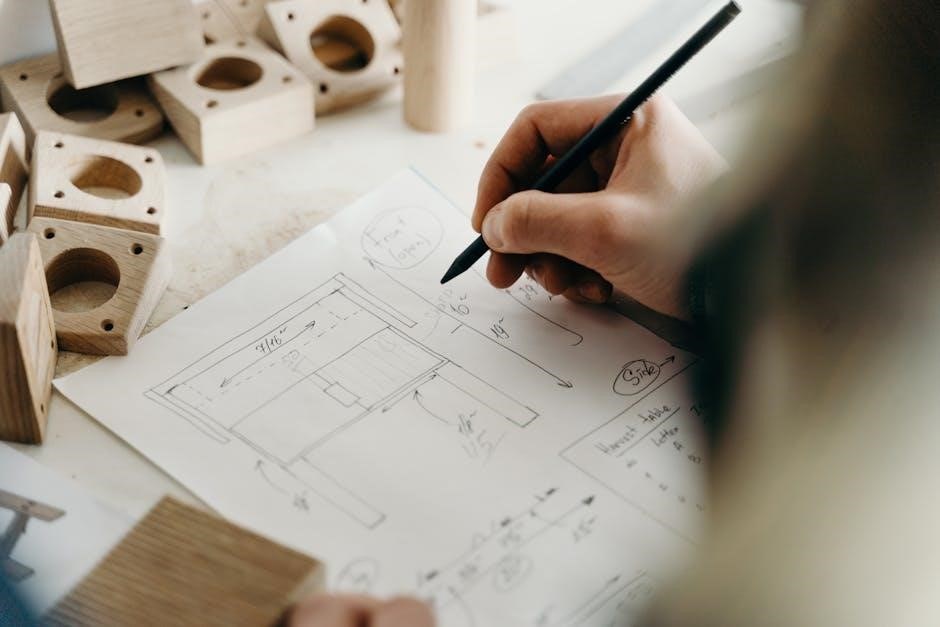
Summarizing Key Takeaways
Figure drawing is a journey of mastering proportion, anatomy, and perspective․ It requires patience, consistent practice, and a deep understanding of light, shadow, and texture․ By focusing on gesture, movement, and emotional expression, artists can create compelling and realistic works․ Embracing both traditional and digital tools, while avoiding common mistakes like over-detailing, helps refine skills․ Regular practice, feedback, and self-criticism are essential for growth․ Remember, figure drawing is not just about technique but also about capturing the essence of the human form․
Encouragement to Keep Practicing
Consistent practice is key to mastering figure drawing․ Every sketch, no matter how simple, brings improvement․ Celebrate small victories and stay committed, as progress often unfolds gradually․ Surround yourself with a supportive community and embrace the joy of creating․ Remember, every artist begins with uncertainty but grows through dedication․ Keep exploring, learning, and pushing your boundaries—each session is a step toward excellence in capturing the human form’s beauty and essence․
Final Thoughts on the Journey of Figure Drawing
Figure drawing is a rewarding journey that combines technical skill with creative expression․ Each sketch offers new insights and challenges, fostering growth and appreciation for the human form․ Embrace the process, celebrate small victories, and remember that mastery is a lifelong pursuit․ Keep practicing, stay inspired, and let your passion for figure drawing continue to guide and fulfill you․